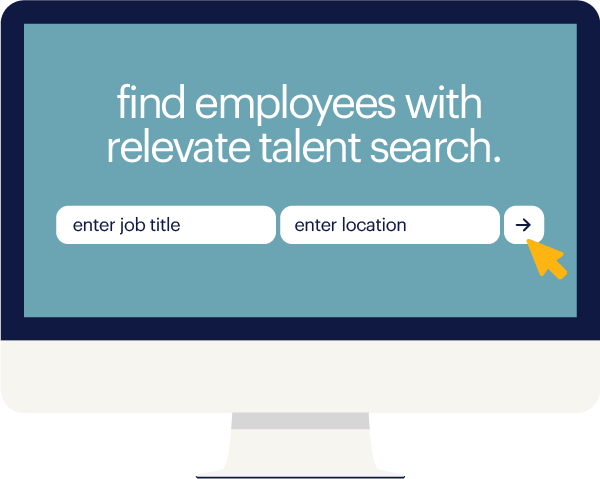If you've done any recent hiring for engineering jobs, you've likely experienced the dangerous impasse facing companies today: There are more jobs than ever, but highly qualified candidates are becoming increasingly scarce. Just take a look at the numbers: The U.S. Bureau of Labor Statistics projects that there will be nearly 140,000 new engineering jobs created by 2026, and yet trained engineers today make up less than two percent of the overall workforce.
And in our digital world, in which seemingly everything is organized around information and device interconnectivity, the value engineers bring to companies to drive innovation and growth is increasing every day. So if you're on the hunt for engineers to drive technical growth that supports your organization's vision, you have quite the long, competitive battle ahead of you. (How long? About 58 days on average.)
What can you do to attract — and retain — top engineering talent, especially for the roles in highest demand? Read on for four steps you can take to address some of the biggest pain points facing hiring managers today, which will strengthen your recruitment game and ensure you know how to get top engineering talent.
ensure your compensation program is competitive
Compensation information is as transparent as it's ever been, thanks to a wave of tools and platforms like salary calculators and employer review sites, so trust and believe that engineers know exactly what it will cost you to lure them to your company. In fact, 78 percent of software engineers say they would leave their current employer if they were offered a better compensation package elsewhere. Here are some steps you can do to ensure your salary and benefits is competitive:
1. audit your compensation levels
With so much change afoot, you may be falling behind the pack if it's been more than a year since you last reviewed your comp program. To ensure your place in the marketplace as an employer of choice, be sure to consult salary guides for key data and start asking tough questions, including:
- Do salaries and workloads align for our engineering team, or is a team manager only making slightly more than a junior engineer?
- As employees advance through the company, are we properly raising their salaries to match the uptick in responsibilities required of their new role?
- Are our compensation levels competitive with other employers hiring engineers in our specific market?
2. make sure your benefits package is cutting-edge, too
Gone are the days when telecommuting, remote work and flexible schedules were classified as perks. Such offerings are now expected by employees, and employer's can benefit as well — especially when it comes to engineers who may be much more productive working in a quiet, distraction-free environment. So with perks and benefits often being the deciding factors when choosing an employer, you'll have to think beyond salary and make sure your benefits package is attracting candidates as well.
strengthen your employer brand
When it comes to hiring engineers in today's market, it's not a matter of a company choosing the right candidate, it's a matter of the candidate choosing the right company. And given that 86 percent of workers wouldn't apply to a company that has a bad reputation with former employees, you need to be on top of your business's employer brand — building one that shines a spotlight on your company's mission, employee success stories and positive culture. After all, you wouldn't launch a new product without the right branding, and your hiring strategy shouldn't be any different. Here are some steps you can do to strengthen your employer brand:
1. share your company's stories
Content marketing isn't just for the B2B and B2C worlds — you'll need to tap into these storytelling strategies to attract new employees as well. Engineers want to find meaning in their work, so be sure to speak to your employees' successes, as well as your company's larger purpose and how engineers can contribute. Whether it's through blog posts, social campaigns or a video series (ideally a mix of all three — and more), pull back the curtain on what makes your company special and let applicants see what it's like to work for you.
2. treat job descriptions as an extension of your employer brand
A job description with dry language and long lists of duties won't catch an engineer's eye for long, especially with the amount of job postings out there. Instead, craft one that sets the stage for the reader and excites them to become a part of your company's mission. Engineers know what types of platforms and tools they'll be working with anywhere they go, so focus on the human aspects of the job as well — how the products and services they'll help create are transforming people's lives and making the world a more connected place.
keep your talent pipeline active with passive candidates
If you think posting your open engineering roles on a job board is going to bring you the tech talent your company needs to succeed, think again. With record-low unemployment and more jobs available than there are people to fill them, you'll need to be continuously developing relationships with passive candidates — the best workers in the field who are too busy contributing value in their current role to actively crawl the job boards. Here are some steps you can do to source passive candidates:
1. think of each of your engineers as a recruiter
Tapping into your engineering team's professional networks is a surefire way to build and maintain the critical talent pipeline you need over the long term. Make optimal use of those existing relationships by building a referral program that incentivizes your engineers to suggest people they know from their network. Not only will referral candidates already have insight into your team and culture before they even apply, they'll likely stay with your company for 25 percent longer, as well.
2. partner with a staffing firm
When it comes to your engineering team, making the wrong hire can cost you hundreds of thousands of dollars. So consider partnering with a staffing firm with deep knowledge of the engineering space and what it takes to land the candidate that's right for your company — not someone else's. With access to their talent pool of high-quality, vetted talent, you'll also be in a better position to hire for any other role you'll need to fill in the weeks ahead.
optimize your hiring process for impact and efficiency
When talent is scarce and you have critical roles to fill, you can't be weighed down by a bloated hiring process. Before posting that job description, be sure you have an efficient timeline in place that makes the best use of everyone's time. Remember what we said earlier about engineers getting to choose their employer rather than the other way around? Having a strong and efficient recruitment process in place will show these pros that you have the engineering prowess and the business know-how that they're looking for in an employer. Here are some steps you can do to optimize your hiring process:
1. let candidates see collaboration up close
To really know if your top candidates are a strong fit with your team, it's going to take more than two people sitting across from each other in an empty conference room. Collaboration is incredibly important to engineering teams, so give candidates the opportunity to meet your engineers in a panel interview, followed by a solution design session or other team activity that will give them insight into how the group works and what type of projects they'll be tackling in the early days.
2. be ready to close the deal — fast
A slow hiring process gives your competition more time to swoop in and make an offer, which can then send you back to square one in no time at all. So once everyone's confirmed that your top candidate would make a great addition to the team, have that competitive offer ready to send, and keep the lines of communication open: Have the hiring manager text or call the candidate to articulate their excitement about the offer, answer any questions the candidate may have and reiterate the company's vision and how meaningful their contributions will be to the team's success.
the top 4 roles in the engineering industry
Now that you're armed with action items you can begin to implement to strengthen your hiring game in today's engineering market, it's time to click through to these articles and learn what you need to know when recruiting for the industry's most in-demand positions:
automation/robotics engineerAnd don't forget how important a partner a staffing firm can be, especially if you know you're going to be expanding your engineering team to meet the demands of today's rapidly changing tech landscape.
Reach out to one of the engineering experts at Randstad to learn more about our talent solutions and see what we can do to help you find your next great engineer. Or, if you'd rather browse our nationwide talent pool, head over to our Find Employees portal today.








